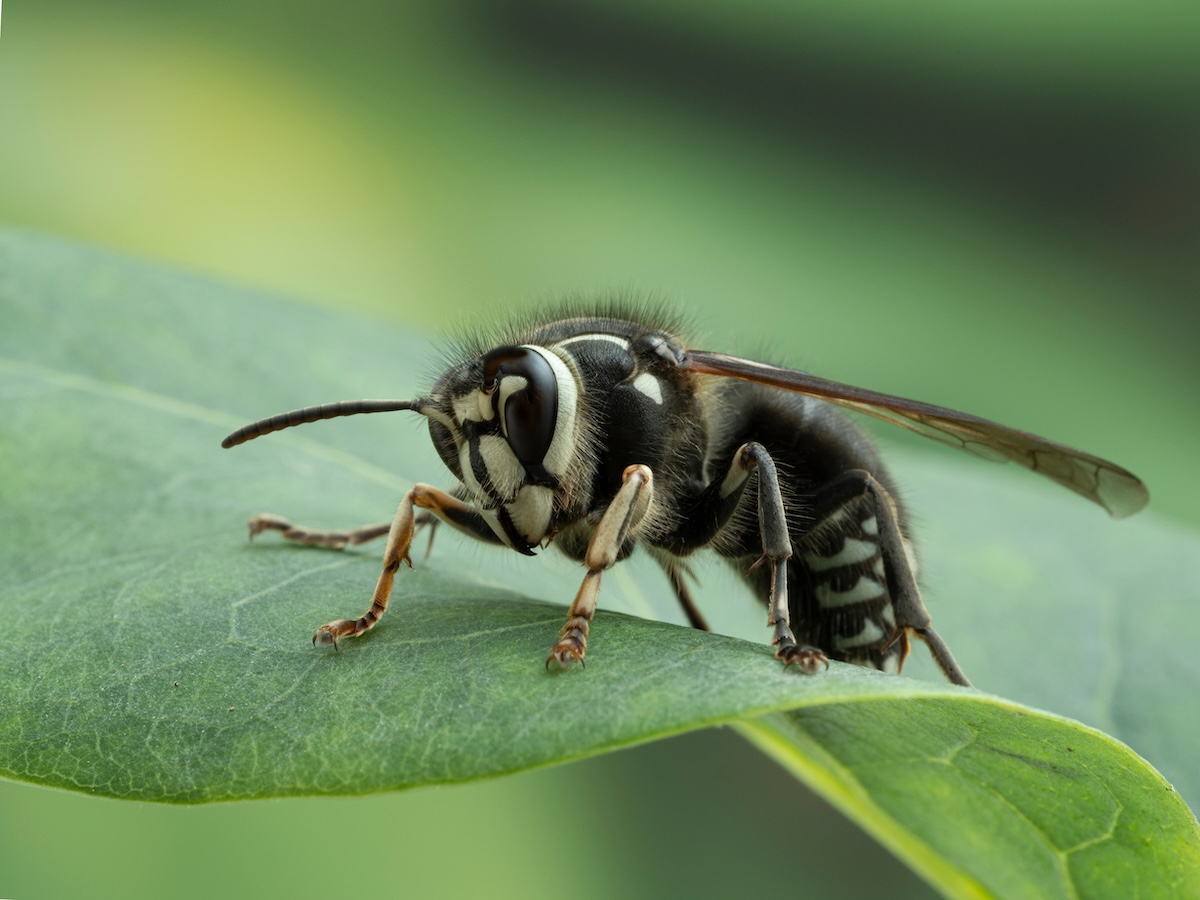In St. Louis, bald-faced hornets rank as the most formidable stinging insects homeowners face. These aggressive aerial architects build massive paper nests. Additionally, they defend their territory with remarkable intensity! Understanding their behavior is crucial for homeowner safety. Furthermore, knowing when to call professionals can prevent dangerous situations. For expert bald faced hornet removal and comprehensive pest management, trust OMNI Pest Solutions to protect your property and family.
Understanding the Nature of These Aerial Architects
The Real Identity Behind the Name
Bald-faced hornets aren’t actually true hornets at all. They’re the largest members of the yellowjacket family! These impressive insects earned their name from the distinctive white markings. Specifically, these markings cover their face and thorax. Additionally, their robust bodies can reach up to three-quarters of an inch in length. As a result, they appear significantly larger than their yellowjacket cousins.
Peak Activity Seasons in St. Louis
Spring Emergence (March-May)
- Queens emerge from winter hibernation to establish new colonies
- Single foundresses begin constructing small, golf ball-sized nests
Summer Expansion (June-August)
- Colonies reach peak population with 100-400 workers
- Nests expand dramatically during this period. In some cases, they reach basketball size
- Consequently, workers become increasingly aggressive defending territory
Fall Aggression (September-November)
- Food sources become scarce during this season. As a result, aggressive foraging behavior increases
- New queens and males are produced for next year’s cycle
Recognizing the Signs of Infestation
Visual Identification Made Simple
The white facial markings distinguish bald-faced hornets immediately. Their black body coloring makes them unmistakable in the St. Louis area. Moreover, their large size sets them apart from other wasps and yellowjackets. Their flight pattern tends to be more deliberate. Similarly, they fly slower than smaller stinging insects.
Nest Architecture and Preferred Locations
These master builders construct gray, papery nests in elevated locations. Throughout St. Louis properties, they select strategic sites. Common nesting sites include:
- Tree branches 10-15 feet off the ground
- Under eaves and roof overhangs
- Dense shrubs and hedgerows
- Utility poles and fence posts
The nests start small initially. However, they can grow to impressive sizes! Some nests reach over a foot in diameter. Furthermore, the entrance is typically located at the bottom. As a result, this creates a strategic defensive position.
Why Professional Bald Faced Hornet Extermination Matters
The Dangers of DIY Approaches
Attempting bald faced hornet nest removal without proper equipment poses serious risks. These insects can sting multiple times. Additionally, they will pursue perceived threats for considerable distances. Consequently, homeowners who attempt removal often suffer painful stings. Furthermore, they achieve incomplete nest elimination.
Professional bald faced hornet control ensures complete colony elimination. Simultaneously, it minimizes risk to your family. OMNI Pest Solutions technicians use specialized protective equipment. Likewise, they employ proven techniques that guarantee thorough results.
When Immediate Action Becomes Critical
Several situations demand immediate professional intervention. For instance, bald faced hornet pest control becomes critical in these scenarios:
- Nests located near high-traffic areas like doorways or patios
- Multiple hornets observed around your property perimeter
- Anyone in the household has known allergies to stinging insects
- Nests discovered near children’s play areas or pet spaces
Strategic Prevention Keeps Future Problems at Bay
Property Modifications That Deter Nesting
Landscaping Adjustments Trim tree branches away from structures regularly. Additionally, maintain clear sight lines around your property. Dense vegetation provides ideal nesting opportunities. As shown above, these insects actively seek such locations.
Structural Maintenance Seal gaps in eaves, soffits, and other potential nesting sites. Complete this work during late winter months. Regular maintenance prevents queens from establishing new colonies. Furthermore, it eliminates access to protected areas.
Early Detection Strategies
Spring Monitoring (March-April)
- Inspect trees and structures for small, early-stage nests
- Look for single hornets investigating potential nesting sites
- Additionally, check previous year’s nest locations for new activity
Summer Surveillance (May-August)
- Monitor for increased hornet activity around your property
- Watch for hornets collecting wood fibers for nest construction
- Similarly, pay attention to flight patterns that might indicate nearby nests
Professional Treatment Approaches That Work
OMNI Pest Solutions employs comprehensive strategies. These address both immediate threats and long-term prevention. Our approach combines targeted treatments with environmental modifications. As a result, we discourage future infestations. Additionally, we provide detailed recommendations for maintaining a hornet-free environment. This continues throughout the active season.
Safety-First Treatment Protocols
Professional bald faced hornet removal requires specialized timing and equipment. This ensures complete colony elimination. Our technicians conduct treatments during optimal hours. During this time, worker activity is minimal. Furthermore, we use advanced application methods that penetrate nest structures completely. This eliminates queens, workers, and developing larvae.
When to Contact OMNI Pest Solutions
Don’t let bald-faced hornets turn your outdoor spaces into no-go zones! Our experienced team provides rapid response for emergency situations and comprehensive prevention programs for long-term protection. With our 100% satisfaction guarantee and commitment to safe, effective treatments, you can trust OMNI Pest Solutions to restore your peace of mind quickly and completely. Contact us today for help with bald-faced hornets!

